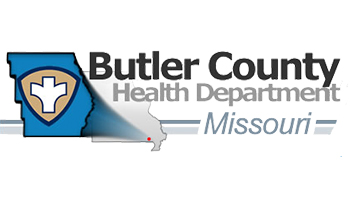Ebola Outbreak: Managing Health Information Resources
On Demand
Course Overview
Course Quality Rating
TBD
Course Description
This course is provided by National Library of Medicine (NLM).
The 2014 West Africa Ebola outbreak has resulted in an explosion of information on many aspects of managing the disease from a clinical and public health perspective. There is also considerable interest in related topics such as legalities of quarantine; ethics of vaccine development; shaming and isolation of Ebola survivors, family members of the deceased and Ebola orphans; food security; and the effects on healthcare for other medical conditions in areas with extremely limited resources. How does one make sense of the outpouring of information from news media, social media, publications and guidelines from international agencies, national governments, NGOs, and professional associations; situation reports; maps and other tools for visualizing the outbreak? What about health messaging materials like infographics, radio jingles, banners, TV interviews, and webinars? Join us to discuss the nature of information flow during an infectious disease outbreak, with a special focus on Ebola-related resources from the National Library of Medicine.
Presenter: Cindy Love is a medical librarian with over 20 years’ experience in public health information management at the National Library of Medicine. As part of the NLM Disaster Information Management Research Center, Cindy has developed information resources for every major U.S. and international disaster in the last 5 years. She co-authored a bibliography on “Viral Hemorrhagic Fever” in 1996.
See Archived recording and PPT slides by scrolling down to October 9, 2014 session: https://disasterinfo.nlm.nih.gov/dimrc/dismeetings.html#previous14
Please note, at the beginning of this archived webinar there are sound/technical difficulties which are cleared up by the time the agenda is reviewed.
Click the LAUNCH button below to start or be taken to the course.
Target Audience
This course is designed for emergency responders / receivers, general public health staff, emergency management, emergency medical services (EMS), and hazardous materials personnel.
Learning Objectives
Having completed this course, the learner will be able to:
Track Ebola information
Access Ebola-related resources from NLM
Understand roles of librarians and information specialists
Manage and avoid Ebola information overload
Council of Linkages Core Competencies for Public Health Professionals (COL)/COL Tier(s)
3A.5 (Tier 1): Conveys data and information to professionals and the public using a variety of approaches (e.g., reports, presentations, email, letters)
6A.4 (Tier 1): Retrieves evidence (e.g., research findings, case reports, community surveys) from print and electronic sources (e.g., PubMed, Journal of Public Health Management and Practice, Morbidity and Mortality Weekly Report, The World Health Report) to support decision making
Professional/Disciplinary Competencies
Public Health Preparedness Capabilities:
Community Preparedness
Function 1: Determine risks to the health of the jurisdiction
Function 2: Build community partnerships to support health preparedness
Function 3: Engage with community organizations to foster public health, medical, and mental/behavioral health social networks
Function 4: Coordinate training or guidance to ensure community engagement in preparedness efforts
Information Sharing
Function 1: Identify stakeholders to be incorporated into information flow
Function 2: Identify and develop rules and data elements for sharing
Function 3: Exchange information to determine a common operating picture
Responder Safety and Health
Function 1: Identify responder safety and health risks
Function 2: Identify safety and personal protective needs
Public Health Preparedness and Response Core:
Communicate and Manage Information
Manage information related to an emergency
Use principles of crisis and risk communications
Report information potentially relevant to the identification and control of an emergency through the chain of command
Collect data according to protocol
Protect Worker health and Safety
Maintain personal/family emergency preparedness plans
Healthcare System Preparedness Capabilities:
Information Sharing
Function 1: Provide healthcare situational awareness that contributes to the incident common operating picture
Format
Archived Webcast
Credit /CEU
None available
Duration
1 hr.
Specifications
None listed
Course Publication Date
10/09/2014











